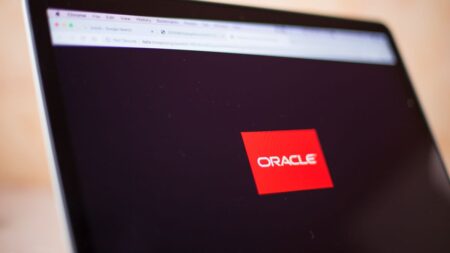No one is an island, and no business is, either. Technology partners are crucial for building scalable networks or products that tap into interconnected capabilities, content, and customer experiences. Integrating with the right digital partners is necessary to reach shared success within any given industry.
In this connected world of Software-as-a-Service (SaaS) partnerships — think of getting Monday.com project management updates in Slack, for example — web APIs have risen as the glue that connects modern businesses and helps exchange data in machine-readable format.
In fact, 97% of enterprise leaders agree that application programming interfaces, or APIs, are an essential part of their organization’s digital transformation, research from RapidAPI found. APIs are critical to digital transformation for many reasons: they increase the reusability of components, enable headless deployments, and can significantly enhance customer experience (CX). They even allow new revenue models to take shape. As such, many new API strategies have emerged, supporting both direct and indirect monetization.
Partners ecosystems are an integral aspect of modern digital business and are necessary to create and leverage the platform effect. Growing and evolving cloud, hyperautomation, and data modernization technologies are making partners and their solutions more interconnected than ever before. The flexibility and scalability of APIs can make these interconnections work smoothly and efficiently.
In this analysis, we’ll consider how an API strategy can help organizations make the most of partners ecosystems. We’ll look at some examples of API-driven partnerships in practice and present tips on how you can successfully architect such partnerships.
Register here for your on-demand pass to view all content from Partners Ecosystem Digital Summit. The digital event, which took place on April 20, focused on analyzing the business and IT imperatives around cloud, AI, automation, data modernization, and cybersecurity that define the future of partnerships.
Building API-Based Partnerships
There are many ways in which an organization may construct its technology partnerships. For example, partners often work with affiliates to resell their products or services on other channels. The eBay Partner Network API, Skyscanner Affiliate Programme, and Shutterstock API are all examples of partner APIs that offer referrals when traffic from third-party applications leads to confirmed purchases. With revenue share models, the benefits — an increase in sales, for example — are clear for both sides.
Complementary businesses may exchange API access to engage in marketing activities to grow together. In the case of platform ecosystems, these partnerships may also be mutually beneficial. For example, Shopify API allows developers to build ancillary services on top of its platform, creating a marketplace for add-ons and plugins that help the eCommerce provider support many use cases at once. Or, consider Airbnb’s API, which is available for select software partners to wrap services around its vacation rental listings.
Co-creation is often streamlined through APIs. For example, API-based partnerships often emerge out of necessity for technological alignment. Consider a music streaming service that wants to integrate its content with a smart TV manufacturer. Standardized RESTful web APIs provide an easy method to port content to any connected device. Utilizing these partner connections allows a content provider to expand its network to new platforms, and a hardware manufacturer wins by featuring additional content on its devices. Logistics, healthcare, and banking are other areas where API-based partnerships are necessary to share data and conduct business.
It’s worth noting that entire industries can benefit from standardizing data exchange through APIs. Although this goes beyond the scope of one-to-one technology partnerships, these efforts are important for establishing partner interoperability. Some examples include:
- IATA: International Air Travel Association includes an Open API working group dedicated to establishing standards for the airline industry
- Nacha: Afinis Interoperability Standards, a part of Nacha, establishes standard APIs to make financial services more efficient
- MACH Alliance: Established by leading digital e-commerce companies, this movement aims to promote the use of MACH (microservices, API-first, cloud-native SaaS, and headless) technologies
- FHIR: HL7 FHIR is an API standard for healthcare data exchange
Benefits of Partner API Ecosystems
We hear mostly about new innovative API-first products coming to market. However, the majority (58%) of APIs are built to power private integrations, and only a small portion (16%) are publicly available on the web, according to the Postman 2022 State of API Report. Nearly one-third (27%) of the other APIs are designed to be partner-facing, the report said. So what are the benefits of using APIs to support a partners ecosystem? Some of the most significant benefits of APIs include:
Improving interoperability with standard interfaces: APIs make pertinent data more accessible and offer a standardized communication method for partners. This dramatically improves the efficiency of sharing data.
Streamlining partner onboarding: APIs with good developer experience (DX) are largely self-serviceable, and many DX tools are available that can enable quick partner onboarding. Furthermore, this approach helps support a developer-led, bottom-up acquisition model, which is more efficient than manual sales engineering.
Targeting various partners simultaneously: An API gateway with proper authentication and authorization can segment partners based on their roles, allowing you to simultaneously serve different datasets or functions to various groups.
Increasing partner engagement: Providing API-based integration can increase partner loyalty and power valuable analytics and visibility. Such integrations go deeper than public user capabilities, offering unique value.
Creating new revenue streams: Affiliate networks or revenue share models can increase sales and open new revenue streams for the business.
Improving end customer experience: Optimized data handling yields better performance, scalability, and reliability. API methods can be leveraged individually to create personalized user views and greatly improve customer satisfaction for both partners.
“APIs are the cornerstone of any scalable software partner ecosystem, but it’s also important to consider their challenges and limitations,” said Chaithanya Yambari, co-founder of Zluri. “APIs are not great at transferring large amounts of data and can require multiple API calls of batched data. They also have limitations around masking PII attributes when sourcing partner data and may require complex filtering without being very transparent. Data retrieval that accounts for real-time data updates across systems is also challenging, since most APIs are state-based.”
Keeping Partners Happy
APIs are a lingua franca for interoperability and are thus a core element of today’s digital partners ecosystems. But building a successful API partner program will require technology providers to meet particular technology requirements. This includes a robust API security posture that avoids common vulnerabilities such as broken access control. APIs should also have high uptime and reliability; any changes should be communicated promptly to avoid breaking client integrations.
“APIs are a modern, scalable, and secure way to connect, engage, and manage partners,” said Nagaraja Krovi, vice president at Persistent Systems. “Enterprises can leverage partner APIs for seamless B2B integration, enhanced customer experience, and even generate new revenue streams. However, not all partners are the same. Each partner can have a different way of consuming the API. Hence, API adoption and accelerating partner onboarding could face hurdles without a well-designed partner API strategy.”
Impressively, customer support tooling provider Gorgias attributes 50% of its revenue to technology partnerships. Technology partnerships can significantly impact the top and bottom lines. As such, treating partner-facing digital interfaces as products is a good practice with direct revenue impact.
To treat APIs as products, consider continually iterating based on user feedback and creating a seamless onboarding experience that puts the developer first. Quality support materials associated with the API, such as intuitive documentation and code libraries, will also go a long way toward building and maintaining thriving partner relationships.
Want more tech insights for the top execs? Visit the Leadership channel:








